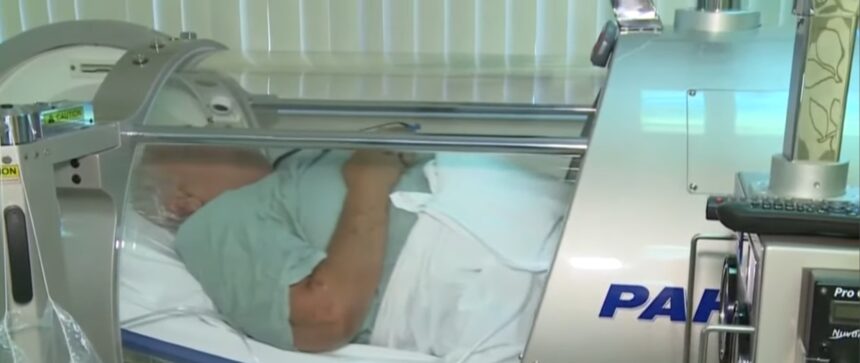Hyperbaric Oxygen Therapy (HBOT) has gained significant attention in recent years for its potential in treating medical conditions, aiding athletic recovery, and promoting overall wellness. This therapy involves breathing 100% pure oxygen in a pressurized chamber, which helps enhance oxygen absorption in the bloodstream and promotes faster healing. Despite its growing popularity, recent tragic incidents have raised serious safety concerns. The January 31, 2025 explosion in a hyperbaric chamber at The Oxford Center in Troy, Michigan, which claimed the life of a 5-year-old boy, has put the safety of these chambers under scrutiny. While celebrities like Jeremy Renner and LeBron James endorse HBOT for recovery and performance, the dangers of fire hazards and oxygen toxicity cannot be ignored. This article explores the latest developments in HBOT, its benefits, risks, and what the future holds for this controversial therapy.
Hyperbaric oxygen therapy has been used for decades to treat conditions such as decompression sickness, carbon monoxide poisoning, and non-healing diabetic wounds. Medical experts have also explored its role in stroke recovery, traumatic brain injuries, and radiation damage. The therapy works by increasing oxygen levels in the blood, allowing tissues to heal faster. In recent years, the use of HBOT in biohacking and sports recovery has skyrocketed, with claims that it can reduce inflammation, boost brain function, and enhance overall performance. However, the recent tragedy in Michigan has raised alarms about potential safety risks, especially in privately owned hyperbaric centers that may lack proper regulatory oversight.
The Michigan hyperbaric chamber explosion was a devastating incident that highlighted the potential dangers of these high-pressure environments. The 5-year-old boy who was undergoing treatment at the time of the explosion tragically lost his life, while his mother suffered severe arm injuries. Initial investigations suggest that an oxygen leak or electrical malfunction may have triggered the blast, as hyperbaric chambers operate under high oxygen concentrations, making them highly combustible. This incident has led to renewed discussions about the regulation of HBOT clinics and the urgent need for stricter safety protocols. Hyperbaric chambers require careful handling, trained personnel, and proper maintenance to ensure they do not pose fire or explosion risks.
Despite these safety concerns, HBOT remains widely used by athletes and celebrities. Jeremy Renner, best known for his role as Hawkeye in Marvel’s Avengers series, has publicly credited hyperbaric therapy as a key factor in his recovery after his life-threatening snowplow accident in 2023. Suffering from multiple bone fractures and lung injuries, Renner turned to HBOT as a critical part of his healing process. He shared an image from inside a hyperbaric chamber, calling the therapy a “staple in my life” for recovery and wellness. His endorsement has increased public interest in the therapy, with many now considering it as a potential tool for injury recovery and general health optimization.
Another high-profile advocate of HBOT is NBA superstar LeBron James, who is known for investing millions in his body’s recovery and performance optimization. Reports suggest that LeBron spends over $1.5 million annually on biohacking techniques, including HBOT. Many elite athletes believe that hyperbaric therapy can speed up recovery, reduce muscle soreness, and improve endurance. Some scientists, however, argue that the benefits of HBOT for healthy individuals remain unproven, and more clinical studies are needed. Nevertheless, the demand for hyperbaric chambers in sports medicine and alternative wellness therapies continues to grow.
The medical benefits of HBOT are well-documented, particularly in cases of chronic wounds, infections, and oxygen-deprived tissues. The therapy is used to increase oxygen levels in the blood, stimulate stem cell production, and accelerate tissue regeneration. HBOT has also been explored as a potential treatment for neurodegenerative conditions such as stroke recovery, traumatic brain injuries (TBI), and even Alzheimer’s disease. Research suggests that oxygen therapy may enhance cognitive function, improve brain plasticity, and aid in neurological repair. In addition, some biohackers claim that HBOT has anti-aging effects by reducing oxidative stress and promoting collagen production, although these claims remain controversial.
While HBOT offers numerous benefits, it also comes with significant risks, especially if safety protocols are not strictly followed. One of the biggest dangers is oxygen toxicity, which occurs when breathing 100% oxygen at high pressures for extended periods. This can lead to lung damage, seizures, and dizziness. Another major concern is the fire and explosion risk, as oxygen-rich environments are highly flammable. The Michigan tragedy serves as a stark reminder of the potential dangers of HBOT, particularly in unregulated clinics that may not follow proper safety guidelines. Other risks include ear and sinus barotrauma, lung collapse, and claustrophobia from spending extended periods inside a sealed chamber.
Looking ahead, the future of HBOT will depend on stricter regulations, better safety measures, and ongoing research to determine its full medical potential. The 2025 Michigan incident has sparked debates about the need for higher safety standards in private HBOT centers. Experts are calling for stricter oversight, improved fire prevention measures, and more thorough staff training. While HBOT has undeniable medical benefits, it is crucial that patients undergo treatment only at certified and well-regulated facilities. As research continues, hyperbaric therapy may become an essential tool in medicine, but its risks must be carefully managed to prevent further tragedies.
Despite the growing popularity of HBOT, the importance of patient education and facility regulation cannot be overstated. If you are considering hyperbaric therapy, it is vital to consult with a medical professional, choose a reputable clinic, and understand the potential risks. The tragedy in Michigan serves as a warning that HBOT must be administered with caution, ensuring that life-saving treatments do not become life-threatening hazards. As 2025 progresses, the medical community will likely push for better regulation and research, ensuring that HBOT remains a safe and effective therapy for those who truly need it.






